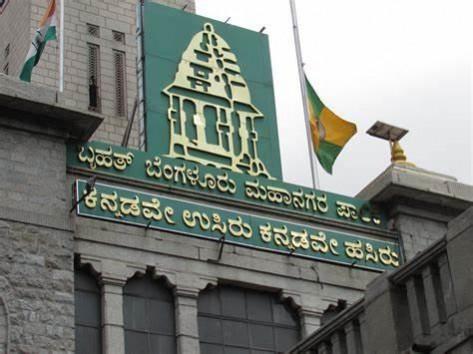
Reports have suggested that a Bill aimed at restructuring the municipal authorities in Bangalore has been revived and if passed by the legislature will likely create a 3 tier governance framework for the city, led by the Greater Bangalore Authority.
The Bill originally proposed in 2018 (Greater Bengaluru Governance Bill) recommended that the "city's governance be restructured by creating multiple Municipal Corporations in a three-tier governance framework to ensure that the local government is closer and more accessible to the people."
This three-tier governance framework, if enacted as law will support the creation of empowered Ward Committees at the lowest level, a set of Municipal Corporations at the middle and a Greater Bengaluru Authority at the top.

What are the main proposed changes?
Tier 1: The new Greater Bengaluru Authority:
- The Greater Bengaluru Authority (GBA) will be an apex body headed by the Chief Minister. It will oversee the newly set up municipal authorities and other existing agencies like the BWSSB, BESCOM, Namma Metro etc.
- The GBA will also consist of mayors of the newly-carved corporations, select councilors, all city MLAs along with domain experts.
- The GBA will be entrusted with extensive planning and financial powers.
Tier 2: The new Municipal Corporations, existing BBMP and BDA
- It is expected that the city area will be split and have approximately 5 separate corporations.
- The BBMP in its current form will therefore no longer exist, with claims that it was "unscientifically" constituted.
- Each corporation will have a mayor and a deputy with up to 10 members as part of the cabinet, with tax collection powers.
- The BDA's powers are likely to be curtailed immensely with planning functions being taken out of its purview. Though, there is scope for the BDA to undertake big infrastructure projects.
Tier 3: Wards, the lowest and closest citizen and community participation tier:
- It is proposed to create 400 wards at the decentralised level, for better citizen engagement.
- At the ward level, a system of proportional representation has been recommended, where 10% of the vote share would secure one seat on the ward committee.
The area covered under the GBA:
- It is reported that GBA's jurisdiction will be expanded to include another 250 sq km of the city's peripheral regions. The BBMP area currently covers about 708 sq km.
- The Electronics City Industrial Township Authority (ELCITA), a carve out, will also be subsumed into the GBA area.
Some key figures: Reports have listed the expected changes
- No of municipal corporations: 5
- No of zones: 2 zones per corporation (Total: 10)
- No of wards: 80 wards per corporation (Total: 400)
- Total area under Greater Bangalore Authority: 900-1,050 sqkm (200 sqkm per corporation)
Why is this important?
This restructuring will be the first experiment of its kind in India aimed at more efficient city governance. It has been estimated that more than half of India's population will reside in urban areas by 2050.
The 74th Amendment to the Indian Constitution forms the basis for decentralised governance in urban areas. While the amendment has been lauded in the past, it's implementation has recently been called into question across cities.
It will be interesting to see the extent of success that this change is likely to achieve in Bengaluru. The Committee for BBMP Restructuring has stated that the "GBA as an apex layer with scope for gap funding based on needs will ensure uniform development."

















